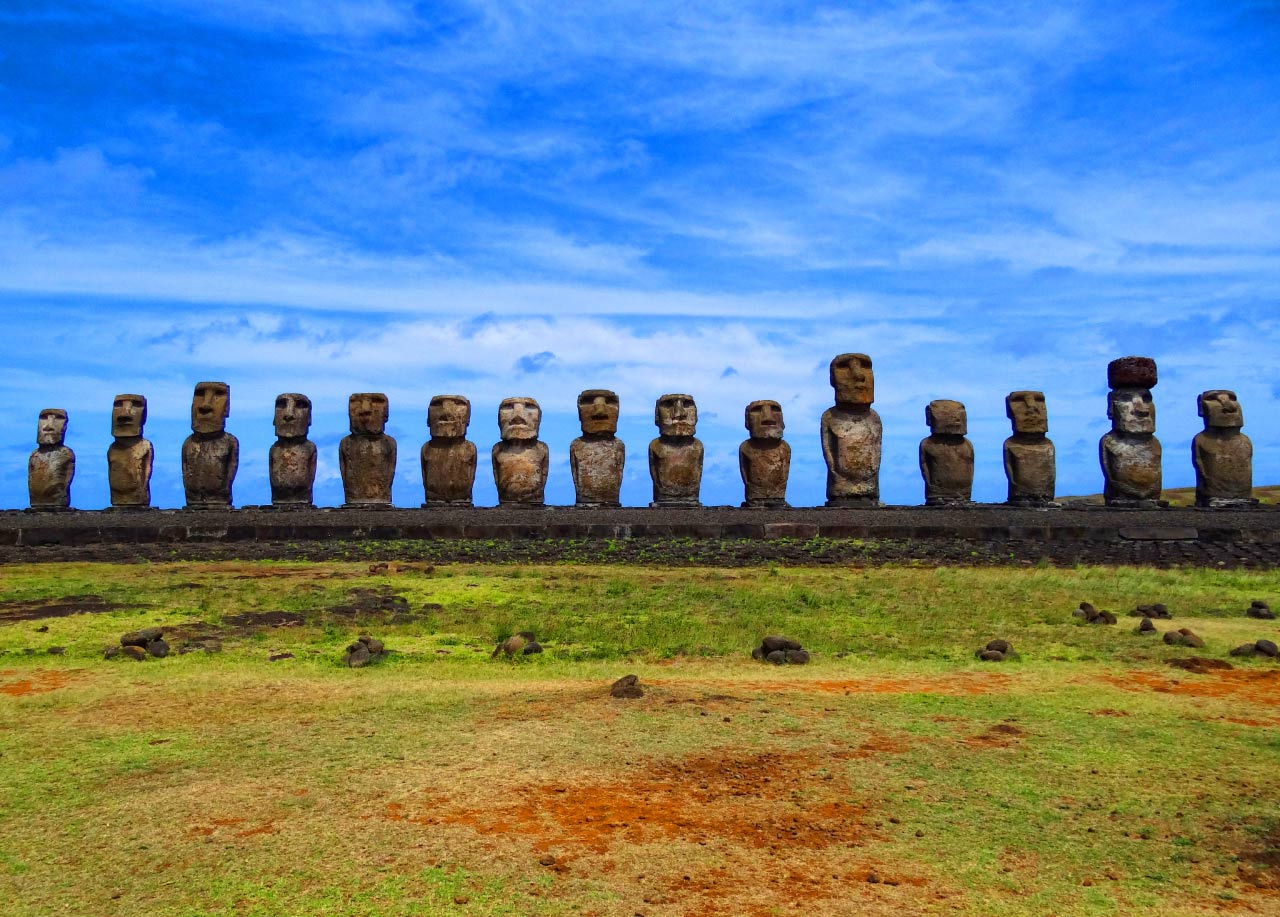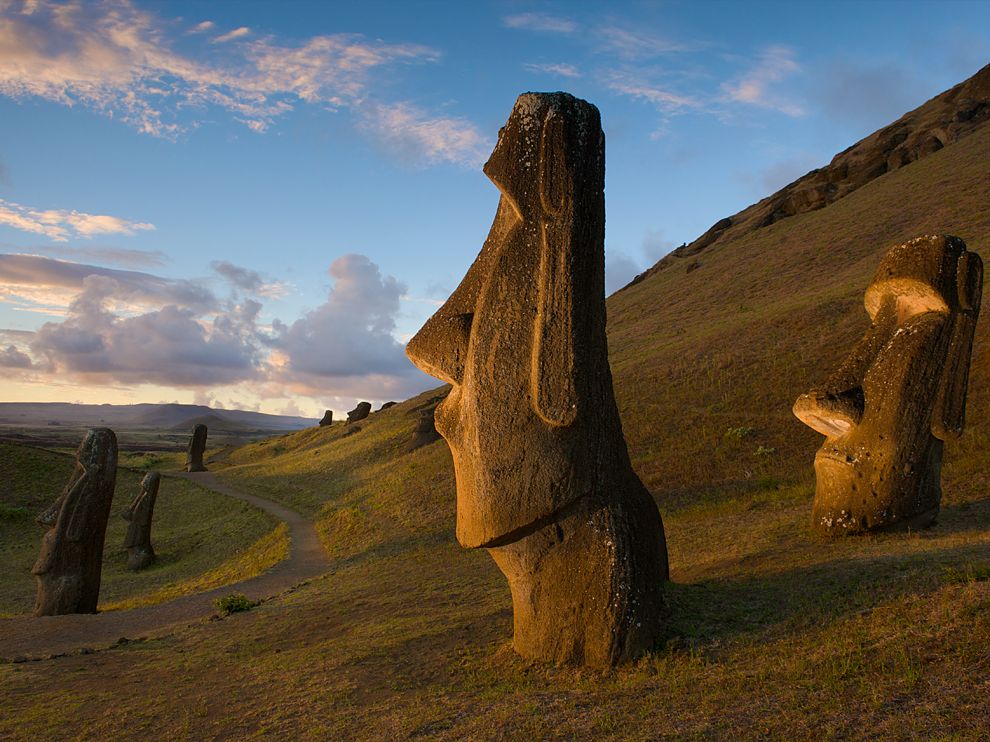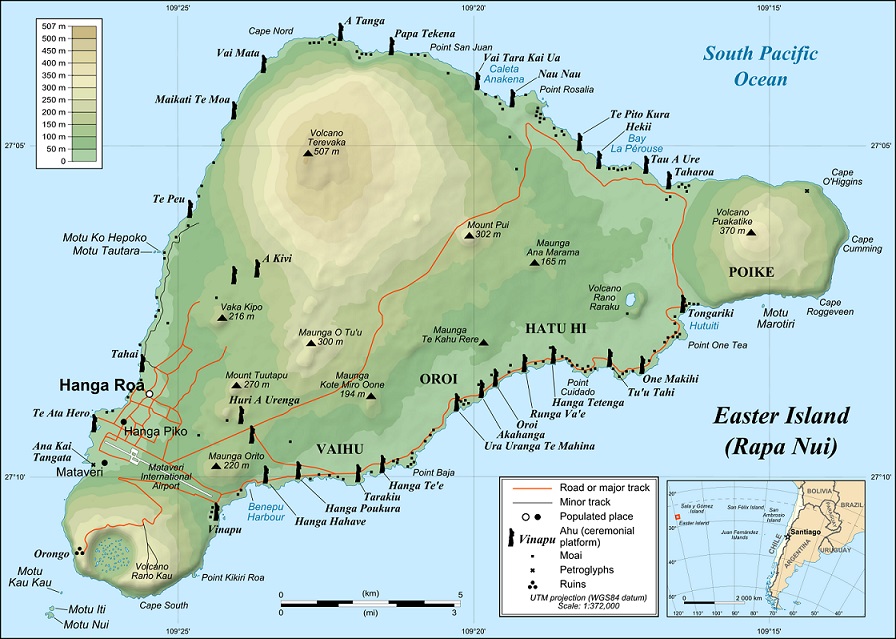Although not particularly cheap, Rapa Nui (Easter Island) is one of the best places to visit before you die, especially if you love to see historical places. Rapa Nui, or Easter Island as it was to become known, is the Polynesian island found in the south east Pacific Ocean. Although famous for the large monumental Moai statues which adorn Easter Island, Rapa Nui is also home to extensive rock art carvings and paintings with unique motifs.
Easter Island presents us with a model of the human spirit. The initial endeavour of migration and protohistoric ocean voyaging is remarkable in itself. The urge to explore and colonise has taken a small group of people to one of the remotest parts of the world, but one which they came to refer to as the ‘navel of the world’. The model demonstrates the ability to establish a religious framework which binded the society. However, the artistic endeavours on Easter Island infact throw light on the changing socio-economic conditions and on the changing balance of power.
Moreover, this same model reveals another facet of the human spirit – greed, for a consumer society to be blinded by a given situation, and to practice rituals at the expense of its resources.
he sequence of events on Easter Island occurred over centuries, but there appears to be a critical period of 27 years – between 1837 when the Moai statues were standing, and 1864 when they had all been pulled down. As to why this happened, we can only speculate, but clearly there are lessons to be learnt. We are fortunate that Easter Island has survived its turbulent history, the extraordinary details of which can be viewed in our section Sentinels in Stone – The Rise & Fall of Easter Island's Culture, leaving us with a small but healthy culture which is home to some of the world’s most original and intriguing art.
In 1995 the Chairman of the Bradshaw Foundation, Damon de Laszlo, and John Robinson, joined Doctor Georgia Lee on Easter Island to witness the surviving culture of Rapa Nui, in the remarkable setting of its powerful landscape and artistic legacy. During the first week of February every year the residents of Rapa Nui celebrate this culture with traditional dances, costumes and competitions.
Easter Island and the demise of its ancient culture exert a special fascination, which is reflected in a number of novels and films. Colossal stone sculptures, rock paintings and a unique script provide evidence of a highly developed culture that has not yet revealed its deepest secrets. What led to the often described collapse of this society? Scientists of the Leibniz Center for Tropical Marine Ecology (ZMT) in Bremen compiled the existing data and, using a mathematical model, were able to answer open questions. Their study was recently published in the journal “Frontiers in Ecology and Evolution”.
“The history of Easter Island is often considered a dire warning for our future because it serves as a parable for the ruthlessness of man towards his fragile environment,” said Gunnar Brandt, a scientist in the Department of Ecological Modelling at the ZMT and one of the authors of the study. The absence of written sources and a scarcity of data make room for speculation. Thus, conflicting and contradictory theories abound regarding the demise of the people of Rapa Nui.
Proponents of the “ecocide” theory assert that the main reason was that the inhabitants of Rapa Nui destroyed the basis of their livelihood. On the island that was once lush with palm trees, the forest was cleared to gain fuel and building material. With the deforestation, the most important resource of the island disappeared. According to this theory, the ecological catastrophe eventually led to a dramatic decline in the population.
The “genocide” theory, on the other hand, focuses on the contact with the European explorers in the 18th century. They introduced infectious diseases such as influenza, smallpox and syphilis to the island. Moreover, slave raiders abducted thousands of islanders, forcing them to work in the guano mines in Peru. As a result, in a very short time the population was almost completely wiped out, so that in 1877 only 36 indigenous inhabitants were counted on the island.
“We asked ourselves whether the Rapa Nui were really so helpless in the face of these catastrophic developments,” said Agostino Merico, co-author of the study. The scientists developed a mathematical model and tested the plausibility of various theories about the temporal course of the deforestation and the decline of the population. The model is based primarily on vestiges of the vanished palm forest, which were dated using the radiocarbon method.
The results of the model show that the decline of the Rapa Nui probably took much longer than previously thought. While the indigenous population was already in decline before the arrival of the Europeans, for a long time the Rapa Nui seemed able to adapt to changes in their environment and to manage their resources to avert an abrupt collapse. The arrival of the Europeans ultimately meant an additional, very dramatic disruption which the already fragile island population could no longer withstand.
The current study is a major step forward in the debate about the history of Easter Island, because it assesses the controversial theories based on objective and quantitative data. It shows that only a combination of the overexploitation of natural resources, decimation due to disease and enslavement can satisfactorily explain the decline of the Rapa Nui.
Watch YouTube Video On UNSOLVED MYSTERIES: The Secret of Easter Island:
[youtube width=”800″ height=”500″]https://www.youtube.com/watch?v=mH0sIjAHBVY[/youtube]
Source: bradshawfoundation.com, research-in-germany.org
[divider scroll_text=”Back To Top”]



